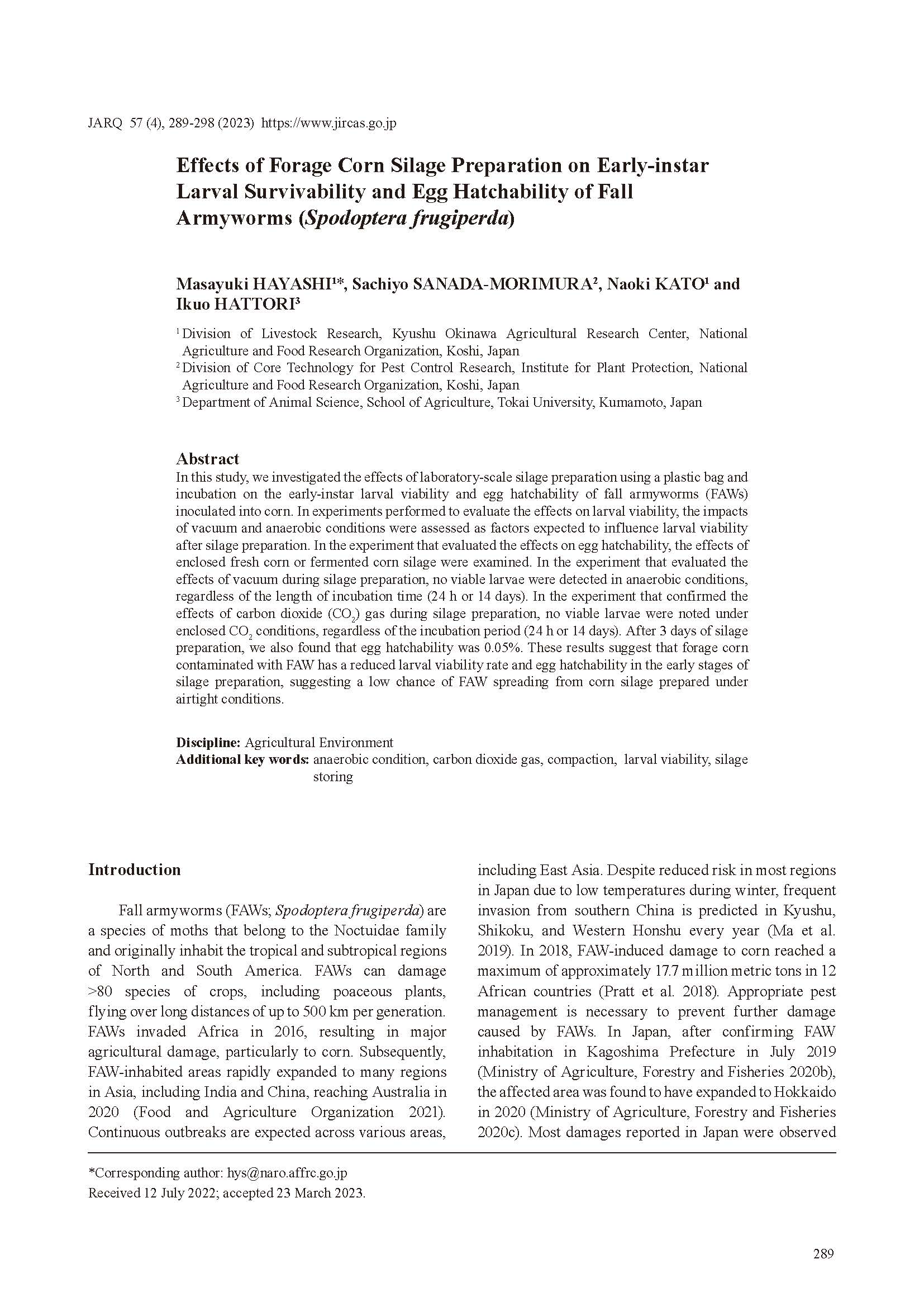Effects of Forage Corn Silage Preparation on Early-instar Larval Survivability and Egg Hatchability of Fall Armyworms (Spodoptera frugiperda)
Japan Agricultural Research Quarterly
| ISSN | 00213551 |
|---|---|
| NII recode ID (NCID) | AA0068709X |

Full text
jarq57-4_289-298.pdf827.45 KB
In this study, we investigated the effects of laboratory-scale silage preparation using a plastic bag and incubation on the early-instar larval viability and egg hatchability of fall armyworms (FAWs) inoculated into corn. In experiments performed to evaluate the effects on larval viability, the impacts of vacuum and anaerobic conditions were assessed as factors expected to influence larval viability after silage preparation. In the experiment that evaluated the effects on egg hatchability, the effects of enclosed fresh corn or fermented corn silage were examined. In the experiment that evaluated the effects of vacuum during silage preparation, no viable larvae were detected in anaerobic conditions, regardless of the length of incubation time (24 h or 14 days). In the experiment that confirmed the effects of carbon dioxide (CO2) gas during silage preparation, no viable larvae were noted under enclosed CO2 conditions, regardless of the incubation period (24 h or 14 days). After 3 days of silage preparation, we also found that egg hatchability was 0.05%. These results suggest that forage corn contaminated with FAW has a reduced larval viability rate and egg hatchability in the early stages of silage preparation, suggesting a low chance of FAW spreading from corn silage prepared under airtight conditions.
| Date of issued | |
|---|---|
| Creator | Masayuki HAYASHI Sachiyo SANADA-MORIMURA Naoki KATO Ikuo HATTORI |
| Subject | anaerobic condition carbon dioxide gas compaction larval viability silage storing |
| Publisher | Japan International Research Center for Agricultural Sciences |
| Received Date | 2022-07-12 |
| Accepted Date | 2023-03-23 |
| Available Online | |
| Volume | 57 |
| Issue | 4 |
| spage | 289 |
| epage | 298 |
| DOI | 10.6090/jarq.57.289 |
| Language | eng |
